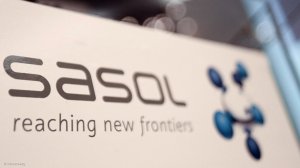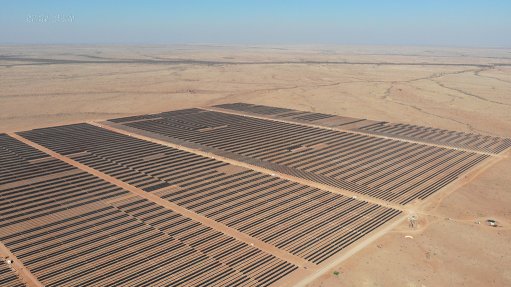Sasol faces up to air quality challenges of new standards
As Sasol works to transition its plant operations to meet the new air quality minimum emissions standards requirements, “credible, viable solutions” to its two biggest air quality challenges remain out of reach and the group plans to apply to have the compliance deadline postponed by five years.
The integrated chemicals and energy group, which operates in compliance with its current licence conditions, on Wednesday admitted it faced some significant challenges with bringing in line, in particular, the sulphur dioxide (SO2) and hydrogen sulphide (H2S) emissions with the 2020 new plant standards set for air quality.
While Sasol complied fully with all current air quality laws, and sustained environmental improvements aligned with the objectives of the Air Quality Act, there was no certainty that it would be able to comply with the new laws, said executive VP for operations Bernard Klingenberg.
Addressing media during a roundtable at the group’s Sandton headquarters, he explained that the roadmaps set out for its Secunda, Natref and Sasolburg operations would maintain the group’s compliance with existing plant standards and align with most of the new plant standards by 2025.
However, some elements not met will necessitate further postponements from its current 2020 deadline.
“We do face significant challenges in meeting the new plant standards for steam and power plant SO2 emissions and coal gasification plant H2S emissions,” he said.
With the standard five-year review of the Act expected to come up imminently, Sasol planned to provide inputs into the progress being made and provide recommendations on the way forward.
“Our intention is not to influence the process to make it easier, but rather to make it understood that it needs to be more practical and in line with international standards,” he said.
Sasol already meets most of the existing plant standards and will be able to meet most of the new plant standards within a ten-year timeframe to 2025.
“Even as we are transitioning to meet the new plant standards, Sasol does not cause exceedance of the National Ambient Air Quality Standards (NAAQS) in our communities,” Klingenberg assured.
In the cases of Sasol’s emissions of SO2 and H2S, both were well under international ambient standards, and adjusting the plant standards might have unintended consequences, he said, citing the complex flue gas desulphurisation technologies for boiler SO2 abatement, which required some 4 000 megalitres a year more water, more internal power consumption and 200 000 t of additional lime or limestone.
The reduced SO2 emissions are offset by increased CO2 emissions, net reduction in power output and a new waste stream, in addition to other challenges in implementing the plant such as space restrictions and construction on a live brownfield site.
“The outcome of moving from the existing standard to a new plant standard is not positive in an environment where the SO2 is already below the max NAAQS,” he added.
“Until we have a better technical solution to this one, the outcome will have very little benefit.”
Meanwhile, Sasol’s continuous on-site improvements have realised steady emission reductions in H2S, which is maintained below the threshold benchmark value for health impacts.
“Reducing H2S emissions is not a straight-forward exercise through off-the-shelf solutions because the Rectisol offgas is a large stream, at low pressure, with relatively low H2S concentrations and unique impurities in the offgas stream,” Klingenberg said.
“Commercially available solutions have not been proven in this context.”
Despite this, a further multipronged roadmap is being investigated to sustainably reduce H2S emissions toward the new plant standard; however Sasol “will be challenged” to meet the new plant standard by 2020.
In line with this, preparations for a request for an extension until 2025 will kick off with consultations next year. Sasol has until April 2019 to submit its request for consideration for a compliance extension until 2025.
Meanwhile, Sasol has assured continuous action regarding environmental initiatives, including work to offset the more serious particulate matter, which remained an immense issue countrywide.
The offsets to reduce community sources of particulate matter and SO2 also formed part of the postponement conditions and have commenced.
Industrial and nonindustrial emissions, domestic fuel burning, veld fires, dust and waste burning are a significant contributor to high ambient particulate matter levels.
“Independent air pollution impact assessments confirmed that, when operating within our licence limits, which are broadly aligned with existing plant standards, we do not cause exceedances of the NAAQS,” he said.
However, offsets can be a supplementary environmental management tool for improving air quality, with Sasol referring to the conclusion of a pilot offset study in KwaDela, which netted positive results.
The community-based air emission offset programme included veld fire management, recycleable and nonrecycleable waste management and the insulation of RDP houses, with some 500 houses insulated and leading to a 30% to 40% reduction in energy requirements.
The success of the programme led to a new target of 500 houses a year, with ongoing bi-annual community engagements on progress.
Sasol plans to launch its sustainability report on September 21.
Comments
Press Office
Announcements
What's On
Subscribe to improve your user experience...
Option 1 (equivalent of R125 a month):
Receive a weekly copy of Creamer Media's Engineering News & Mining Weekly magazine
(print copy for those in South Africa and e-magazine for those outside of South Africa)
Receive daily email newsletters
Access to full search results
Access archive of magazine back copies
Access to Projects in Progress
Access to ONE Research Report of your choice in PDF format
Option 2 (equivalent of R375 a month):
All benefits from Option 1
PLUS
Access to Creamer Media's Research Channel Africa for ALL Research Reports, in PDF format, on various industrial and mining sectors
including Electricity; Water; Energy Transition; Hydrogen; Roads, Rail and Ports; Coal; Gold; Platinum; Battery Metals; etc.
Already a subscriber?
Forgotten your password?
Receive weekly copy of Creamer Media's Engineering News & Mining Weekly magazine (print copy for those in South Africa and e-magazine for those outside of South Africa)
➕
Recieve daily email newsletters
➕
Access to full search results
➕
Access archive of magazine back copies
➕
Access to Projects in Progress
➕
Access to ONE Research Report of your choice in PDF format
RESEARCH CHANNEL AFRICA
R4500 (equivalent of R375 a month)
SUBSCRIBEAll benefits from Option 1
➕
Access to Creamer Media's Research Channel Africa for ALL Research Reports on various industrial and mining sectors, in PDF format, including on:
Electricity
➕
Water
➕
Energy Transition
➕
Hydrogen
➕
Roads, Rail and Ports
➕
Coal
➕
Gold
➕
Platinum
➕
Battery Metals
➕
etc.
Receive all benefits from Option 1 or Option 2 delivered to numerous people at your company
➕
Multiple User names and Passwords for simultaneous log-ins
➕
Intranet integration access to all in your organisation





















